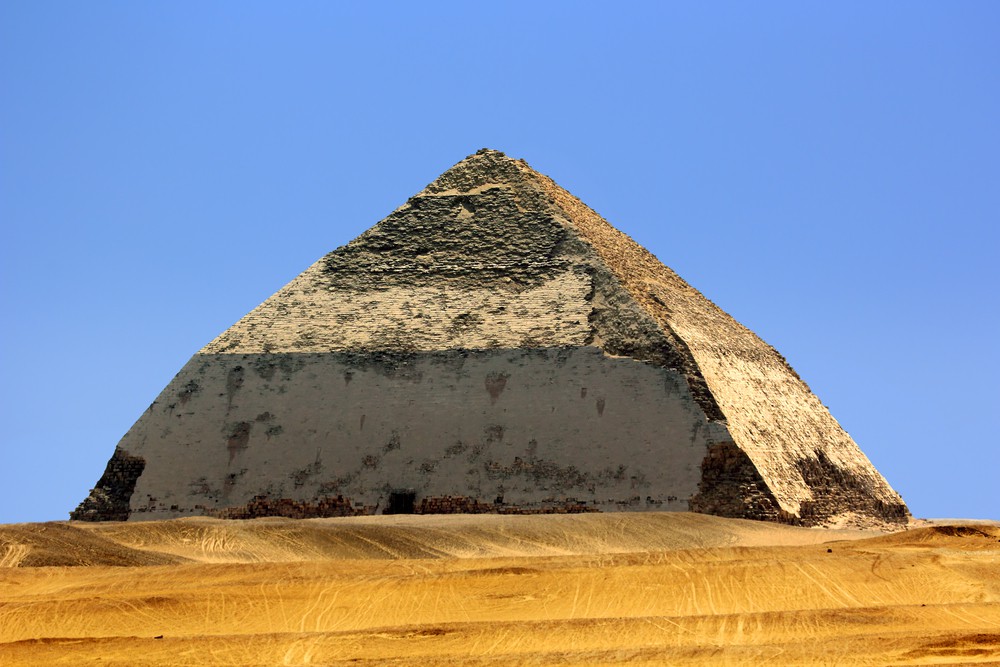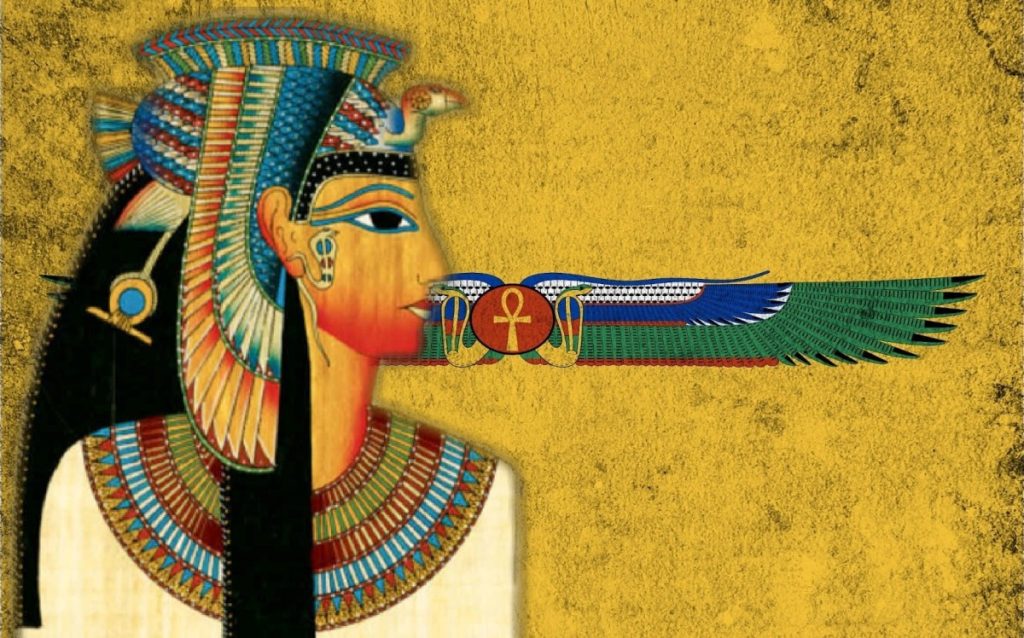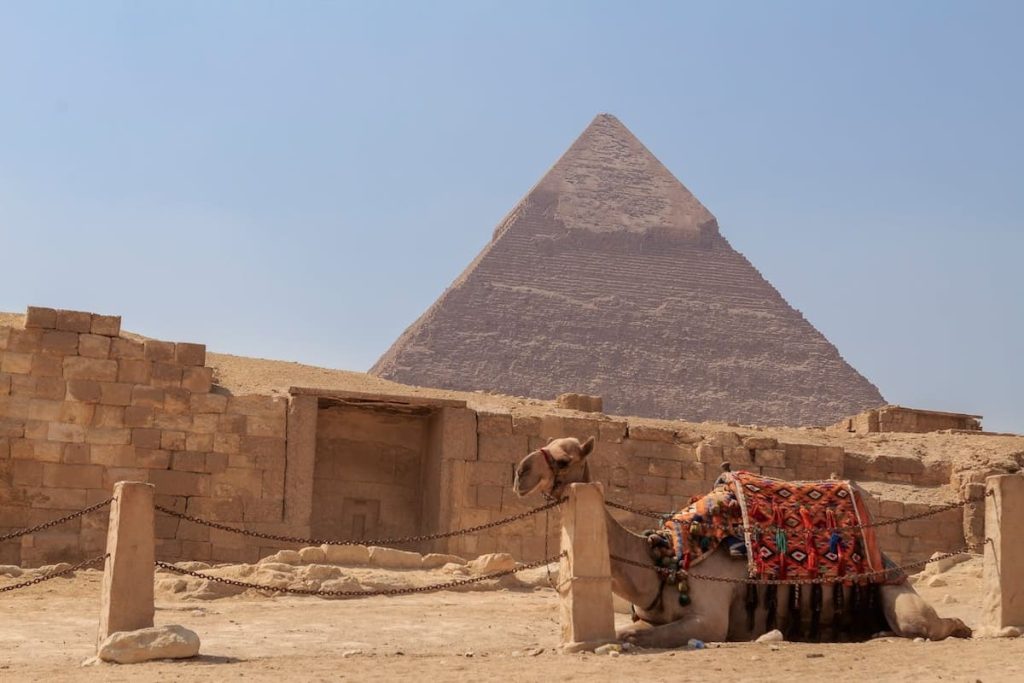Introduction
Did you know that some pharaohs ruled Egypt for over 60 years, leaving behind legacies that still awe us today? The Ancient Egyptian Kings: Pharaohs of Legend, or pharaohs, are shrouded in grandeur and mystery, their reigns marked by extraordinary achievements and remarkable stories. From the unification of Upper and Lower Egypt to the construction of awe-inspiring pyramids, the pharaohs’ legacies are etched in the sands of time. These kings were not just rulers; they were living gods, commanding both reverence and fear. Understanding their reigns and historical significance offers us a glimpse into the heart of one of the most fascinating civilizations in history.
Imagine standing before the Great Pyramid of Giza, a marvel of human ingenuity and ambition, built over 4,500 years ago. Or picture the bustling life along the Nile, where the pharaohs ruled with absolute authority, their decrees shaping the destiny of their people. These Ancient Egyptian Kings were the architects of a civilization that has captured our imagination for centuries. Join me as we delve into the reigns of these extraordinary rulers, exploring their achievements, challenges, and the indelible marks they left on the world.
1. The Dawn of the Pharaohs
The dawn of the pharaohs marks the beginning of the majestic journey of Ancient Egyptian Kings. This era saw the establishment of the pharaonic tradition, setting the foundation for one of the world’s most iconic civilizations.
Narmer: The Unifier of Upper and Lower Egypt
The story of Egypt’s first king, Narmer, is one of conquest and unification. Around 3100 BCE, Narmer, also known as Menes, united Upper and Lower Egypt, creating the first centralized state in history. Imagine the sense of triumph as he merged these two lands, bringing together diverse cultures and traditions under a single crown. The Narmer Palette, an ancient ceremonial engraving, depicts this momentous event, showcasing Narmer’s victory and his role as a unifier.
Early Dynastic Period: The Formation of the First Centralized State
The Early Dynastic Period, spanning the first two dynasties, laid the groundwork for the pharaonic state. During this time, the foundations of Egyptian society, culture, and government were established. The pharaohs were seen as divine intermediaries, responsible for maintaining ma’at, or cosmic order. They wielded absolute power, their word becoming law. Imagine the grandeur of the royal courts, bustling with activity as decrees were issued, and the elaborate rituals that reinforced the pharaoh’s divine status.
This period was marked by significant developments in writing, art, and architecture. The invention of hieroglyphics allowed for the recording of history, religious texts, and administrative documents. Artistic expression flourished, with intricate carvings and statues celebrating the pharaoh’s divine nature. In architecture, the earliest forms of monumental structures began to appear, hinting at the grandeur of the pyramids that would follow.
The dawn of the pharaohs set the stage for the incredible epochs that lay ahead. From the unification under Narmer to the establishment of a centralized state, these early kings carved a path that would be followed by their successors, each contributing to the rich tapestry of Ancient Egyptian history. As we continue our journey through the eras of the pharaohs, we’ll uncover more stories of ambition, innovation, and legacy, painting a vivid picture of a civilization that continues to captivate us.
2. The Old Kingdom and Pyramid Builders
The Old Kingdom is often referred to as the “Age of the Pyramids,” a period when Egypt reached unprecedented heights of architectural and cultural achievement. This era saw the construction of the most iconic pyramids, reflecting the immense power and resources of the pharaohs.
Djoser and the Step Pyramid
Imagine stepping back in time to the 27th century BCE, when Pharaoh Djoser ruled over a unified and prosperous Egypt. His reign marked the beginning of the Old Kingdom and set a new standard for royal monuments. Djoser’s most remarkable achievement was the construction of the Step Pyramid at Saqqara, the earliest colossal stone building in Egypt and the first pyramid ever built. Designed by the genius architect Imhotep, the Step Pyramid began as a traditional mastaba tomb but evolved into a six-tiered structure reaching 60 meters in height.
The Step Pyramid was not just a tomb; it was a statement of divine power and innovation. Picture the bustling construction site, with thousands of laborers meticulously shaping limestone blocks under the scorching sun. This monument symbolized the pharaoh’s connection to the gods and his role as a stabilizing force in the cosmos. It paved the way for future architectural endeavors, setting the stage for even grander projects.
Sneferu: The Innovative Pyramid Builder
Pharaoh Sneferu, who reigned in the 26th century BCE, was a visionary whose architectural innovations led to the perfection of pyramid construction. His reign was marked by experimentation and the construction of not one, but three pyramids. The first, the Meidum Pyramid, started as a step pyramid but was later transformed into a true pyramid with smooth sides. However, structural issues led to its partial collapse.
Undeterred, Sneferu commissioned the Bent Pyramid at Dahshur. This pyramid, with its unique bent shape, reflects an important learning curve in engineering techniques. Imagine the sense of determination and progress as Sneferu’s builders adjusted their methods to ensure stability. Finally, Sneferu achieved perfection with the Red Pyramid, also at Dahshur, which stands as the first successful true pyramid with smooth sides, heralding a new era in pyramid construction.

Khufu: The Great Pyramid at Giza
The pinnacle of Old Kingdom pyramid construction came with Pharaoh Khufu, who reigned in the 26th century BCE. Khufu’s Great Pyramid at Giza is one of the Seven Wonders of the Ancient World and the most iconic symbol of Egypt’s architectural prowess. Standing at 146 meters, it was the tallest man-made structure in the world for over 3,800 years.
The construction of the Great Pyramid is a testament to the organization, resources, and skill of Khufu’s administration. Imagine the sight of thousands of workers hauling massive limestone blocks from nearby quarries, guided by precise engineering plans to create this colossal structure. The Great Pyramid was aligned with the cardinal points and constructed with astonishing precision, reflecting the advanced understanding of mathematics and astronomy of the time.
Khafre and the Sphinx
Khufu’s son, Pharaoh Khafre, continued his father’s legacy by constructing his own pyramid at Giza, which is slightly smaller but equally impressive. Khafre is also credited with commissioning the Great Sphinx, a monumental statue with the body of a lion and the head of a pharaoh, believed to bear his likeness. The Sphinx stands as a guardian of the Giza Plateau, symbolizing royal power and protection.
Imagine standing before the Sphinx, its enigmatic gaze stretching across the desert, embodying the mysteries of ancient Egypt. The Sphinx and Khafre’s pyramid together reflect a period of significant artistic and architectural achievements, showcasing the pharaoh’s divine authority and the kingdom’s prosperity.
The Decline of the Old Kingdom
Despite the grandeur of the pyramids, the Old Kingdom eventually faced decline due to various factors, including economic strain, climatic changes, and political instability. By the end of the Sixth Dynasty, the centralized power of the pharaohs weakened, leading to the First Intermediate Period, a time of fragmentation and chaos.
Picture the bustling centers of power losing their influence, local governors (nomarchs) rising in autonomy, and the once-unified state fracturing into smaller, competing factions. This period of decline underscores the challenges of maintaining a vast and complex civilization and sets the stage for future reunifications and renaissances
3. The Middle Kingdom: Reunification and Renaissance
The Middle Kingdom is often regarded as a period of renaissance in Ancient Egypt, marked by the reunification of the country, advancements in arts and literature, and significant architectural achievements. This era saw the resurgence of centralized power, fostering a cultural and political renaissance that restored stability and prosperity to the land.
Mentuhotep II and the Reunification of Egypt
Imagine a time of chaos and disunity, following the decline of the Old Kingdom. The First Intermediate Period was characterized by fragmented rule and internal strife, but this began to change with the rise of Mentuhotep II. Ruling from Thebes around 2055 BCE, Mentuhotep II embarked on a campaign to reunify Egypt, bringing an end to the turbulent era.
Mentuhotep II‘s victory over the rival factions in Herakleopolis marked the beginning of the Middle Kingdom and reestablished a strong centralized authority. His reign is often seen as the dawn of a new era, one where stability and prosperity flourished once again. Imagine the relief and hope of the people as they witnessed the reunification of their land and the resurgence of order and progress.
The Achievements of Amenemhat I and Sesostris III
Following Mentuhotep II, the 12th Dynasty saw some of the most effective and ambitious rulers in Egyptian history. Amenemhat I, who founded the dynasty around 1985 BCE, implemented significant administrative reforms, relocating the capital to a new city called Itjtawy. He restructured the government to strengthen central control and reduce the power of local governors.
Picture the bustling new capital of Itjtawy, with its grand palaces and administrative buildings, symbolizing the renewed strength and organization of the kingdom. Amenemhat I’s reign laid the foundations for a stable and prosperous Middle Kingdom, setting a precedent for his successors.
Sesostris III, one of the most powerful and effective rulers of the Middle Kingdom, took the throne around 1878 BCE. Known for his military campaigns and extensive building projects, Sesostris III expanded Egypt’s borders, securing valuable trade routes and resources. His campaigns into Nubia established Egyptian control over the region, ensuring access to its rich gold mines.
Sesostris III’s reign was also marked by impressive architectural achievements. He commissioned the construction of fortresses along the Nile to protect Egypt’s southern borders and initiated large-scale irrigation projects to improve agriculture. Imagine the sight of these fortresses, standing as guardians along the Nile, and the fertile fields benefiting from improved irrigation systems, reflecting the pharaoh’s dedication to the prosperity and security of his kingdom.
Cultural Renaissance and Literary Achievements
The Middle Kingdom was a period of cultural renaissance, with significant advancements in arts, literature, and architecture. This era saw the production of some of Egypt’s greatest literary works, such as the “Instructions of Amenemhat,” a collection of wisdom texts, and the “Tale of Sinuhe,” a masterpiece of ancient Egyptian literature.
Imagine the vibrant cultural scene, with scribes and scholars diligently recording these literary works, artists creating intricate carvings and paintings, and architects designing magnificent temples and monuments. The art and literature of the Middle Kingdom reflect a society that valued wisdom, storytelling, and artistic expression.
Architectural Innovations and the Revival of Pyramid Building
The Middle Kingdom also witnessed a revival in pyramid building, though the structures were smaller and less grandiose compared to those of the Old Kingdom. Pharaohs like Senusret II and Senusret III constructed pyramids at sites such as Lahun and Dashur, incorporating innovative designs and new construction techniques.
Picture these pyramids rising against the Egyptian landscape, symbolizing the continuity of royal tradition and the enduring legacy of the pharaohs. These structures, while not as colossal as their predecessors, represent the architectural ingenuity and resourcefulness of the Middle Kingdom.
4. The New Kingdom: Empire Builders and Cultural Flourish
The New Kingdom represents the zenith of Ancient Egypt’s power and glory, marked by expansive territorial conquests, extraordinary architectural achievements, and a vibrant cultural life. This era saw the rise of some of Egypt’s most famous and powerful pharaohs who left an indelible mark on history.
Hatshepsut: The Female Pharaoh Who Ruled as King
Imagine the grandeur of a pharaoh’s court, bustling with advisors, priests, and officials. Among them stands Hatshepsut, one of the most remarkable figures in ancient history. Ascending the throne around 1479 BCE, Hatshepsut initially ruled as regent for her stepson, Thutmose III, but soon declared herself pharaoh. She adopted the full regalia of a male king, including the false beard, and often depicted herself as a man in statues and reliefs.
Hatshepsut’s reign was a period of peace and prosperity. She is best known for her ambitious building projects, most notably her mortuary temple at Deir el-Bahari, nestled against the cliffs of the Theban Necropolis. Imagine the breathtaking sight of this temple, with its grand colonnades and terraces, a testament to Hatshepsut’s vision and determination. Her reign also saw significant trade expeditions, such as the famous voyage to the land of Punt, which brought back exotic goods and wealth.
Thutmose III: The Napoleon of Ancient Egyptian Kings
Thutmose III, Hatshepsut’s stepson, eventually took full control after her death and proved to be one of Egypt’s greatest military leaders. Reigning from 1479 to 1425 BCE, Thutmose III conducted numerous military campaigns, expanding Egypt’s empire to its greatest extent. His conquests included victories in Syria and Palestine, bringing immense wealth and prestige to Egypt.
Imagine the exhilaration of his armies as they marched across the Near East, securing tribute and allegiance from conquered territories. Thutmose III’s military prowess earned him the nickname “Napoleon of Ancient Egypt.” His achievements were not limited to warfare; he also initiated impressive building projects, including additions to the Karnak Temple complex.
Akhenaten and the Religious Revolution
Pharaoh Akhenaten, who reigned from 1353 to 1336 BCE, is one of the most enigmatic and controversial figures in Egyptian history. He is best known for his radical religious reforms, which centered on the worship of Aten, the sun disk. Akhenaten moved the capital to a new city, Akhetaten (modern-day Amarna), dedicated to Aten.
Imagine the dramatic changes during Akhenaten’s reign: traditional religious practices and the worship of Amun and other gods were suppressed, and the new capital was filled with art depicting the pharaoh and his family in intimate, naturalistic scenes. This period, known as the Amarna Revolution, challenged the established religious order and left a lasting impact on Egyptian art and culture.
Tutankhamun: The Boy King and His Treasures
Following Akhenaten’s death, the young Tutankhamun ascended the throne around 1332 BCE. Tutankhamun’s reign was relatively short and marked by the restoration of traditional religious practices and the return to Thebes as the capital. However, it is his tomb, discovered in 1922 by Howard Carter, that has immortalized him in history.
Picture the awe-inspiring moment when Carter first peered into the tomb, discovering a wealth of treasures, including the iconic golden mask of Tutankhamun. These artifacts provide a vivid glimpse into the opulence of the New Kingdom and the reverence accorded to the pharaohs in death.
Ramses II: The Great Builder and Warrior
Ramses II, also known as Ramses the Great, reigned from 1279 to 1213 BCE and is often regarded as Egypt’s most powerful pharaoh. His reign was characterized by military campaigns, extensive building projects, and a long, prosperous rule. Ramses II’s military achievements included the famous Battle of Kadesh against the Hittites, which ultimately led to one of the first known peace treaties in history.
Imagine the grandeur of Ramses II’s constructions, such as the temples of Abu Simbel, with their colossal statues carved into the cliffs, and the Ramesseum, his mortuary temple on the west bank of the Nile. These monuments not only celebrated his military victories but also his divine status and legacy.
Cultural Flourish and Artistic Achievements
The New Kingdom was a period of cultural flourishing, with significant advancements in art, literature, and architecture. The temples of Karnak and Luxor, with their towering columns and intricate carvings, exemplify the architectural splendor of this era. The Valley of the Kings, with its richly decorated tombs, reflects the New Kingdom’s focus on elaborate burial practices and the afterlife.
Imagine walking through these magnificent structures, adorned with detailed reliefs and vibrant paintings depicting scenes of daily life, religious rituals, and the pharaohs’ divine journeys. The New Kingdom’s cultural achievements continue to captivate us, showcasing the height of ancient Egyptian civilization.
5. The Late Period and Decline
The Late Period of Ancient Egypt was characterized by gradual decline, internal strife, and foreign invasions. Despite these challenges, this era also witnessed cultural and artistic revivals, as well as notable rulers who attempted to restore Egypt’s former glory.
The Influence of Libyan, Nubian, and Persian Rulers
As the New Kingdom waned, Egypt entered a phase of political fragmentation and foreign dominance. During the Third Intermediate Period (c. 1069–664 BCE), Libyan chieftains established control over various regions, creating the 22nd and 23rd Dynasties. Despite their foreign origins, these rulers adopted Egyptian customs and titles, striving to legitimize their authority.
Imagine the bustling courts of these Libyan pharaohs, where Egyptian traditions mingled with foreign influences. This period also saw the rise of the Nubian kings from the Kingdom of Kush, who seized control of Egypt and established the 25th Dynasty. One of the most prominent Nubian rulers was Pharaoh Taharqa, who sought to revive the grandeur of the New Kingdom with ambitious building projects and military campaigns.
The Nubian dominance was eventually challenged by the Assyrians, leading to a period of instability. In 525 BCE, Egypt fell to the Persian Empire, marking the beginning of the 27th Dynasty. The Persian rulers, including Darius I, implemented administrative reforms and embarked on construction projects, blending Persian and Egyptian elements.
The Last Native Pharaohs and the Ptolemaic Dynasty
Despite the foreign dominance, Egypt saw a brief resurgence under native rulers during the 28th to 30th Dynasties (c. 404–343 BCE). Pharaohs like Nectanebo I and Nectanebo II sought to restore Egypt’s independence and initiated significant building projects. Imagine the resilience and determination of these rulers as they attempted to reclaim their nation’s sovereignty amidst external pressures.
The last native pharaoh, Nectanebo II, was eventually defeated by the Persians, leading to the Second Persian Period. However, Persian rule was short-lived, as Alexander the Great conquered Egypt in 332 BCE. Following Alexander’s death, his general Ptolemy established the Ptolemaic Dynasty, blending Greek and Egyptian cultures.
Picture the vibrant city of Alexandria, founded by Alexander the Great, which became a hub of learning and culture. The Ptolemaic rulers, including the famous Cleopatra VII, embraced Egyptian traditions while also fostering Hellenistic influences. Cleopatra’s reign was marked by her efforts to maintain Egypt’s independence in the face of growing Roman power.
Cleopatra VII and the End of Pharaonic Egypt
Cleopatra VII, the last active ruler of the Ptolemaic Kingdom, is one of history’s most iconic figures. Her intelligence, political acumen, and relationships with Julius Caesar and Mark Antony have been the subject of countless stories and legends. Imagine Cleopatra’s court, filled with intrigue and opulence, as she navigated the complexities of Roman politics to safeguard her throne.
Despite her efforts, Cleopatra’s reign ended in tragedy. Following her defeat by Octavian (later Augustus), she committed suicide in 30 BCE, marking the end of Pharaonic Egypt. Egypt then became a province of the Roman Empire, bringing an end to over three millennia of pharaonic rule.

Cultural and Artistic Revival Amidst Decline
Even during periods of political instability and foreign rule, Egypt experienced cultural and artistic revivals. The Late Period saw the construction of significant temples, such as the Temple of Horus at Edfu and the Temple of Isis at Philae. These structures, adorned with intricate carvings and hieroglyphs, reflect the enduring devotion to traditional Egyptian religion and art.
Imagine walking through these temples, with their majestic columns and detailed reliefs depicting gods, pharaohs, and mythological scenes. Despite the challenges of the Late Period, these monuments stand as a testament to the resilience and creativity of the Egyptian people.
The Legacy of the Pharaohs
The decline of pharaonic power did not diminish the lasting impact of the Ancient Egyptian Kings. Their achievements in governance, architecture, art, and culture have left an indelible mark on world history. The stories of these rulers continue to captivate our imagination, offering lessons in leadership, innovation, and the enduring human spirit.
As we reflect on the journey through the reigns of Egypt’s most influential kings, we are reminded of the rich tapestry of history they wove. From the unification under Narmer to the grandeur of the New Kingdom and the resilience during the Late Period, the legacy of the pharaohs endures, inspiring us to explore and understand the profound depths of human civilization.
Conclusion
We’ve journeyed through the fascinating reigns of Egypt’s most influential kings, from the unification of Upper and Lower Egypt by Narmer, through the awe-inspiring pyramid builders of the Old Kingdom, the renaissance of the Middle Kingdom, the expansive empire of the New Kingdom, to the complex era of the Late Period. Each of these epochs reveals the incredible achievements, challenges, and legacies left behind by the pharaohs who ruled this ancient land.
In the dawn of the pharaohs, we saw the establishment of a centralized state, the first steps toward building a civilization that would stand the test of time. The Old Kingdom brought us monumental architectural feats, such as the Great Pyramid of Giza, symbolizing the zenith of ancient engineering and ambition. The Middle Kingdom, with its reunification and cultural renaissance, demonstrated resilience and the revival of artistic and literary traditions.
The New Kingdom showcased the might of Egypt’s empire builders, the grandeur of their temples, and the complexity of their religious and political innovations. Finally, the Late Period, despite its challenges and eventual decline, highlighted the enduring spirit and cultural revival that persisted amidst foreign invasions and political fragmentation.
The Ancient Egyptian Kings were not just rulers; they were visionaries, warriors, and pioneers who shaped the course of history. Their legacies continue to inspire and awe us, thousands of years later. As we stand before their monumental achievements, we are reminded of the timeless human spirit and the enduring quest for greatness.
What lessons can we learn from the Ancient Egyptian Kings in our modern world? Perhaps it is the importance of resilience in the face of adversity, the power of innovation, and the impact of leaving behind a legacy that transcends time. As we reflect on their stories, let us draw inspiration from their accomplishments and strive to create our own enduring legacies, just as the pharaohs did in the golden sands of Egypt.

Faris is the passionate founder of Travel2Egypt, deeply connected to Aswan’s essence. He aims to share the true heart of Egypt through its rich history, vibrant culture, and the warmth of its people. Join Faris to experience the magic of Aswan beyond the usual tourist paths.





